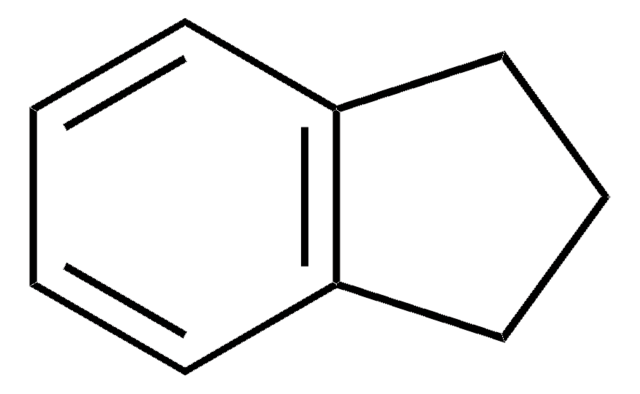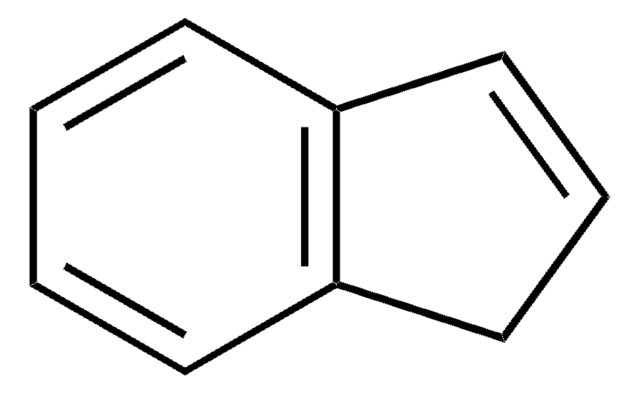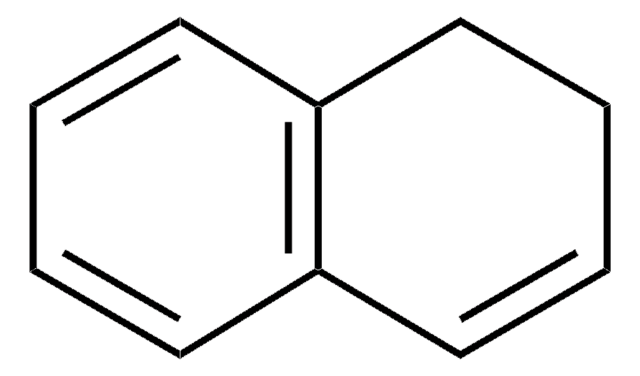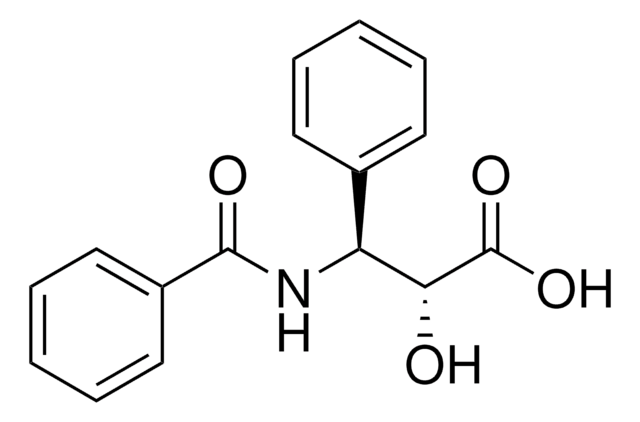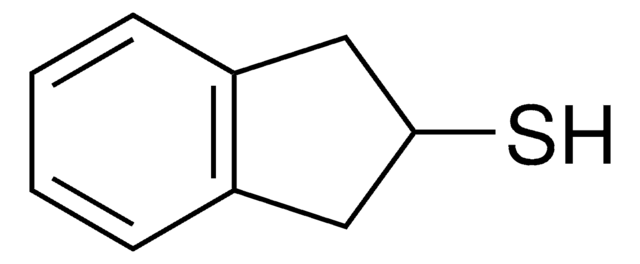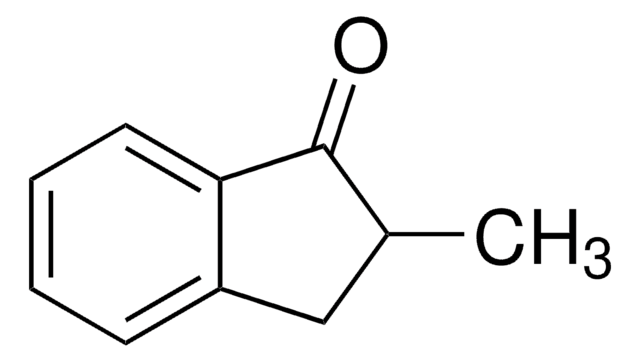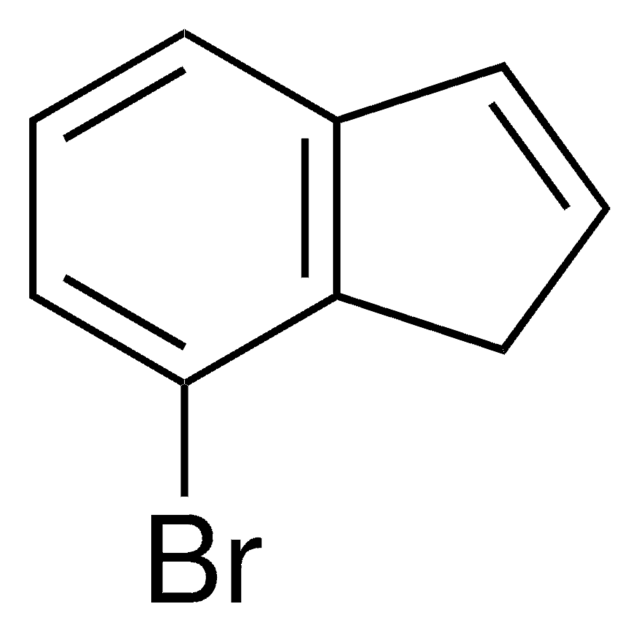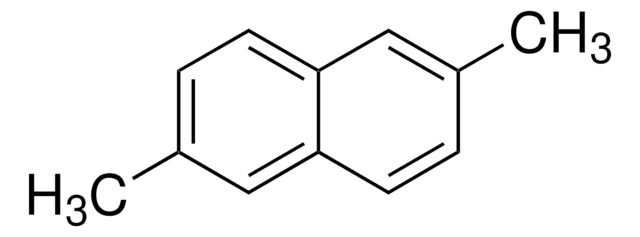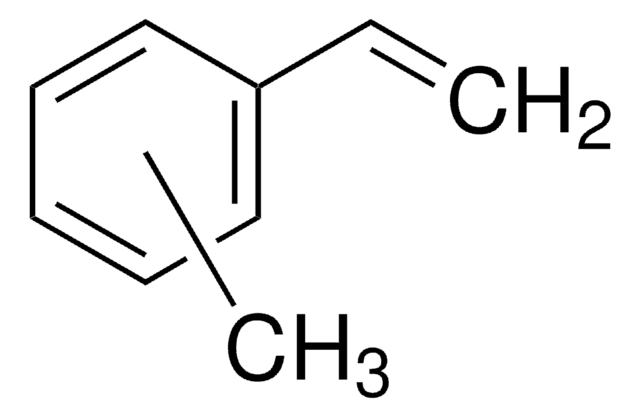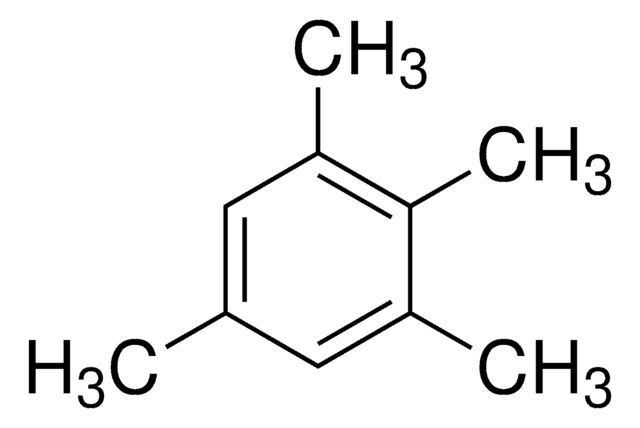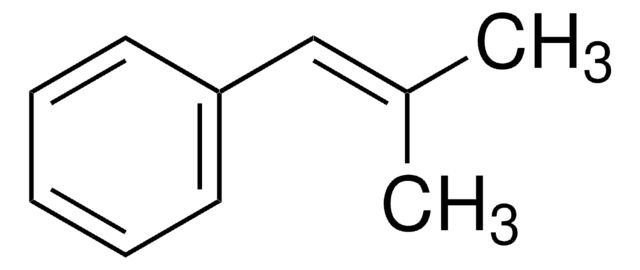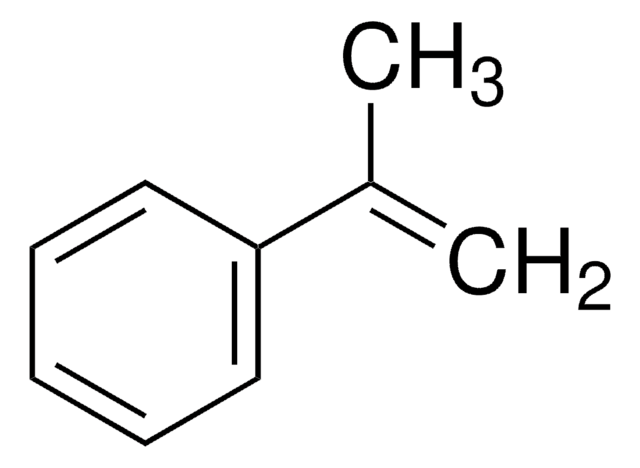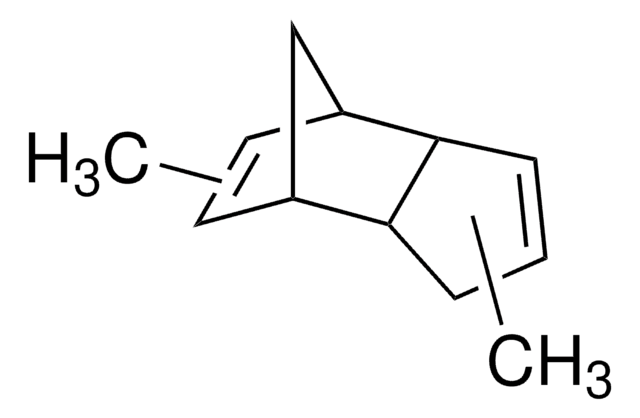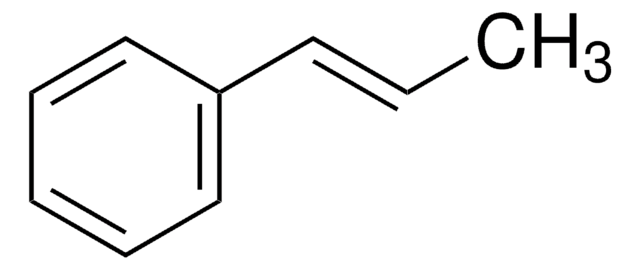Wszystkie zdjęcia(1)
Kluczowe dokumenty
449431
2-Methylindene
98%
Synonim(y):
2-Methyl-1H-indene
Zaloguj sięWyświetlanie cen organizacyjnych i kontraktowych
About This Item
Wzór empiryczny (zapis Hilla):
C10H10
Numer CAS:
Masa cząsteczkowa:
130.19
Numer MDL:
Kod UNSPSC:
12352100
Identyfikator substancji w PubChem:
NACRES:
NA.22
Polecane produkty
Próba
98%
współczynnik refrakcji
n20/D 1.567 (lit.)
bp
45 °C/0.2 mmHg (lit.)
gęstość
0.971 g/mL at 25 °C (lit.)
ciąg SMILES
CC1=Cc2ccccc2C1
InChI
1S/C10H10/c1-8-6-9-4-2-3-5-10(9)7-8/h2-6H,7H2,1H3
Klucz InChI
YSAXEHWHSLANOM-UHFFFAOYSA-N
Szukasz podobnych produktów? Odwiedź Przewodnik dotyczący porównywania produktów
Kod klasy składowania
10 - Combustible liquids
Klasa zagrożenia wodnego (WGK)
WGK 3
Temperatura zapłonu (°F)
168.8 °F - closed cup
Temperatura zapłonu (°C)
76 °C - closed cup
Wybierz jedną z najnowszych wersji:
Masz już ten produkt?
Dokumenty związane z niedawno zakupionymi produktami zostały zamieszczone w Bibliotece dokumentów.
Klienci oglądali również te produkty
I Ogawa et al.
Talanta, 28(10), 725-729 (1981-10-01)
The degradation of acenaphthylene, acenaphthene, 2-methylnaphthalene, 2-methylindene, 3-methylindene and indene in water solutions was studied. These compounds at the 25-150 mug/l. level were almost totally degraded at ambient temperature within three days. The microbial population responsible for the degradation occurs
Decomposition, isomerization, and ring expansion in 2-methylindene: Single-pulse shock tube and modeling study.
Lifshitz A, et al.
The Journal of Physical Chemistry A, 108(16), 3430-3438 (2004)
Antimicrobial effect of monomers and polymers with azole moieties.
Moon W-S, et al.
Journal of Applied Polymer Science, 90(11), 2933-2937 (2003)
Mike McD Francis et al.
Canadian journal of microbiology, 49(11), 699-706 (2004-01-22)
A purified microbial isolate, identified as a strain of Rhodococcus sp., metabolized indene primarily to iso quinoline and lesser amounts of indandiol and indanone. Isoquinoline production was dependent on the presence of microbial culture, indene, and ammonium ions as the
Long Zhao et al.
Nature communications, 10(1), 3689-3689 (2019-08-17)
Polycyclic aromatic hydrocarbons (PAHs) represent key molecular building blocks leading to carbonaceous nanoparticles identified in combustion systems and extraterrestrial environments. However, the understanding of their formation and growth in these high temperature environments has remained elusive. We present a mechanism
Nasz zespół naukowców ma doświadczenie we wszystkich obszarach badań, w tym w naukach przyrodniczych, materiałoznawstwie, syntezie chemicznej, chromatografii, analityce i wielu innych dziedzinach.
Skontaktuj się z zespołem ds. pomocy technicznej